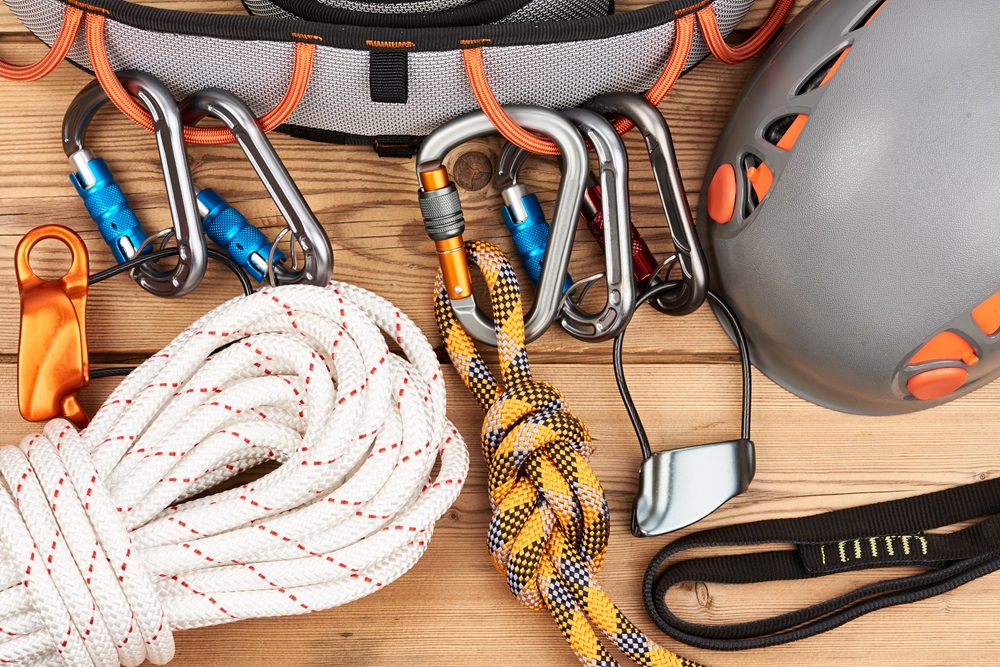When you’re suspended hundreds of feet above the ground, your climbing gear becomes your lifeline.
Carabiners—those metal loops with spring-loaded gates—might seem simple, but their design can dramatically affect your safety.
The gate, that opening part of the carabiner, comes in several types, each with unique benefits for different climbing scenarios.
Understanding the Basics of Carabiner Gates
Carabiners are essential connecting tools in your climbing gear collection. Their gates open to allow ropes, webbing, or other equipment to be attached, then close to secure everything in place.
The way these gates function can mean the difference between a safe climb and a dangerous situation.
The Four Main Gate Types
There are four primary carabiner gate designs you’ll encounter:
- Straight Gate – The traditional design with a simple, straight-bar mechanism
- Bent Gate – Features a concave shape on the gate to make clipping ropes easier
- Wire Gate – Uses a loop of wire instead of a solid bar, making it lighter
- Locking Gate – Adds an extra security mechanism that prevents accidental opening
Let’s explore how each affects your safety in different climbing environments.
Straight Gate Carabiners: The Reliable Standard
Straight gate carabiners feature a solid, straight bar that opens away from the carabiner body. They’re robust and dependable, making them good all-around options.
Safety Profile:
- Strength: High overall strength
- Risk of gate flutter: Moderate
- Ease of clipping: Good
- Weight: Medium
When you’re setting up top-rope anchors or creating multi-pitch belay stations, straight gates provide reliable security without excessive weight.
Bent Gate Carabiners: The Rope-Friendly Option
Bent gate carabiners have a concave indentation on the gate that creates a basket shape. This design makes clipping ropes faster and easier, especially when you’re pumped and struggling to maintain your grip.
Safety Profile:
- Strength: Good
- Risk of gate flutter: Higher than straight gates
- Ease of clipping: Excellent
- Weight: Medium
You’ll appreciate bent gates when clipping into protection quickly during sport climbing, where speed often matters.
Wire Gate Carabiners: The Lightweight Champion
Wire gates replace the solid bar with a loop of stainless steel wire. This innovative design reduces weight while maintaining strength.
Safety Profile:
- Strength: Good
- Risk of gate flutter: Low
- Ease of clipping: Good
- Ice buildup resistance: Excellent
- Weight: Very light
When you’re ice climbing or making alpine ascents where every ounce matters, wire gates shine by reducing weight and resisting freezing.
Locking Gate Carabiners: The Security Masters
Locking gates add an extra security mechanism—typically a screw gate, twist-lock, or magnetic system—that prevents accidental opening.
Safety Profile:
- Strength: Highest
- Risk of gate flutter: None when locked
- Ease of clipping: Requires extra steps
- Weight: Heavier than non-locking options
For belaying, anchoring, or any safety-critical connection, locking gates provide essential security that can save your life.

Comparative Safety in Different Climbing Scenarios
| Gate Type | Sport Climbing | Trad Climbing | Ice Climbing | Big Wall | Gym Climbing |
| Straight | Good | Very Good | Good | Good | Good |
| Bent | Excellent | Good | Fair | Good | Excellent |
| Wire | Good | Excellent | Excellent | Good | Good |
| Locking | Critical Points | Critical Points | Critical Points | Excellent | Critical Points |
Gate Direction Matters Too
Beyond the gate type, the direction it faces can impact safety. Gate Lash happens when a carabiner strikes the rock during a fall, potentially causing the gate to open momentarily. To minimize this risk:
- For quickdraws, position gates facing away from your direction of travel
- For anchor carabiners, position gates in opposite directions to prevent both from being hit simultaneously
Making the Right Choice for Your Climb
When selecting carabiners for your next adventure, consider:
- The type of climbing you’ll be doing
- Weather conditions (ice or extreme cold can affect some gates)
- Weight considerations for long approaches or multi-pitch routes
- Critical connection points that require locking gates
Your carabiner choice should reflect your climbing style, skills, and the specific demands of your route.

